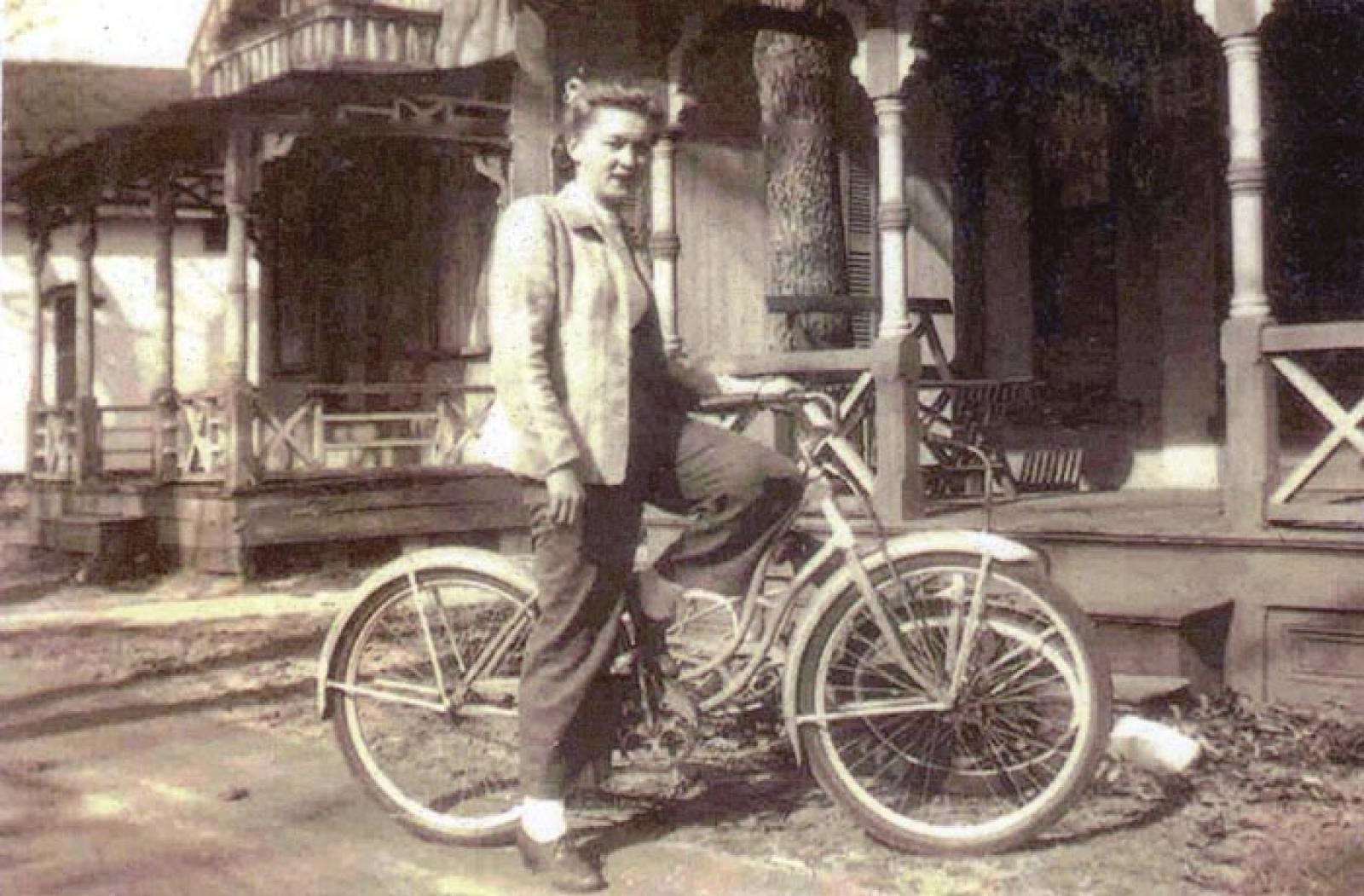Mary Carr, 88, made a journey back to the Vineyard last Friday. The last time she was here, 67 years ago, war raged in Europe and in the Pacific. It was a time in the nation’s history when people all around her made huge sacrifices. In that year, she lost her husband.
For Mary, this two-day Vineyard visit was a rekindling of fond memories. It was also about Memorial Day and loss and sharing her personal story with others.
She was last on the Vineyard in June of 1944, with her first husband, Leonard (Lenny) John Michels Jr. The two were childhood sweethearts and had been married on July 23, 1943 in their home parish church in Mattydale, a town near Syracuse, N.Y.
He joined the Navy in 1942, right after the bombing of Pearl Harbor. He spent a lot of time at Quonset Point as a member of the US Navy Torpedo Squadron 81, training and flying as a gunner. She worked at Syracuse China, a ceramic china factory that during the war made landmines and ammunition. Later she moved to Pawtucket to be closer to her husband.
When he was stationed at the air facility at Otis, he made frequent trips to Martha’s Vineyard. So to be together, she moved from Pawtucket to Falmouth Heights and then to the Vineyard. There was a big Navy presence on the Island back then. Today’s Martha’s Vineyard Airport owes its creation to a wartime airport built for the Navy.
The couple rented a small gingerbread cottage at the Oak Bluffs Camp Ground at 7 Washington avenue. Their time together here was short, about a month, before he was shipped off to Florida and then to California, to join the aircraft carrier USS Wasp.
Her husband left the Island in May.
He was 21 years old when he was killed in a plane crash on Nov. 24, 1944. His plane, a Grumman TBM-1C Avenger Torpedo Bomber, was en route from the USS Wasp to an atoll called Ulithi when it went down. For a while he was listed as missing in action; his body was never recovered. He was listed as aviation ordnanceman third class and received a ribbon bar for outstanding heroism in action against the enemy.
While this was a truly sad time, there were big twists and turns ahead in Mrs. Carr’s life. Looking back, she said, she feels blessed, fortunate.
Years after the war, she married Robert A. Carr Jr., a close friend of her and her late husband’s. The Carrs settled in Cumberland, R.I. Together they had five children and now 13 grandchildren and one great-grandchild. Bob Carr died 20 years ago. Mrs. Carr said she always stayed in close touch with Lenny’s parents; they stepped in to become her children’s grandparents.
For her children and grandchildren, the story of Lenny Michels remains an important part of her story and the story of her nation. Mrs. Carr said she always insisted that she and her children take time out to watch the Memorial Day parade, to honor those who have served the country.
“You know, we never met him, but we always felt he was part of the family,” said Marcia Carr Carvalho, one of her three daughters, of Lincoln, R.I.
Mary and Lenny’s story is preserved in memories, and in a collection of letters and photographs, many from those war years.
“She still has these letters, carefully tucked away in a strongbox along with the chilling telegram notifying her that her husband was MIA,” said Mrs. Carvalho said.
The letters tell an amazing story. Mrs. Carvalho said she was particularly taken by how her mother described the times. “My cousin in New York found several letters and returned them to my mom,” Mrs. Carvalho said. “My mom got a job waitressing at a diner in Oak Bluffs [across the street from where today there is Reliable Market]. She remembers Mr. Penney, the owner. She worked split shifts, six days a week and was paid $12 a week, plus meals. She wrote many details in a letter back home to her in laws.”
One letter is written on Oak Bluffs stationery and is dated April 10, 1944. “In the letter, my mom tells her in laws about renting the cottage for $25 a month and having a $10 deposit on electricity, back then called ‘lights.’ She says she can be reached at Mr. Penney’s dinette, the phone number was Vineyard Haven 728. She mentioned that the dinette was open until 8 p.m.” The dinette was run by Joseph S. Penney.
Through letters, Mrs. Carvalho said, she learned that in May of 1944, Lenny and his squadron were sent to Florida for additional training. “Mary stayed behind on Martha’s Vineyard, until June, when she was called home to Mattydale to care for her dying mother.
“Sadly, as it turns out, that little cottage on Martha’s Vineyard was the last place she ever saw her husband,” Mrs. Carvalho said.
But a key ingredient to her visit this past week, to the Vineyard, was to see again that tiny house where the couple had lived for a short time.
Prior to their visit, and only up until recently, they couldn’t find 7 Washington avenue. Spurred by her own curiosity along with the interest of her mother and siblings, earlier this year Mrs. Carvalho had a conversation with a cousin, Chris Hart of Vineyard Haven, about trying to find the original house. Ms. Hart asked Mike Carroll, also of Vineyard Haven, to investigate.
Looking through town hall records and trying to match the photographs, Mr. Carroll found the house, but it had a new street address: 7 Butler avenue. The reason for the long-standing mystery? The road name had changed.
On Saturday, Mrs. Carr and her three daughters went to the house and posed for pictures.
Whenever she has a chance on Memorial Day to talk with her children, Mrs. Carr said it is about remembrance.
Mary Ag Cazeault, a daughter, remembers going with her family to the Memorial Day observances through the years. The day began with a mass at the cemetery, followed by a parade that ended at the cemetery. Her mother insisted on those trips.
Daughter Stella Carr Hodkinson recalled that her mother was always reverent about the day and the need to cherish and participate in the observance.
“I tell my grandchildren to pray for peace,” Mrs. Carr said. “You don’t want to know how hard war can be. There were no young men around; they were all away.
“Every day is special to me.”







Comments
Comment policy »